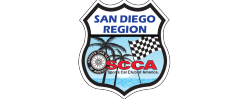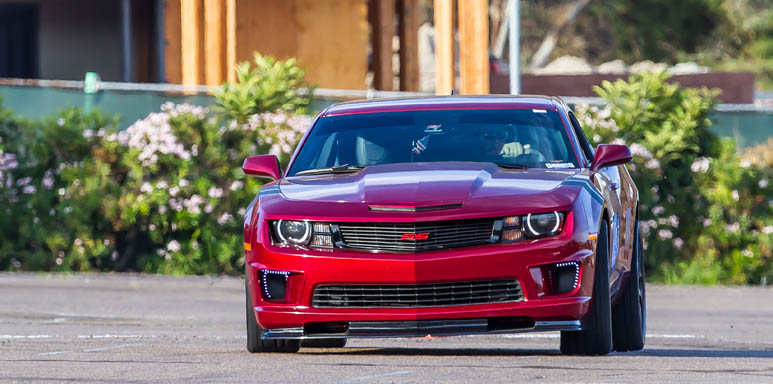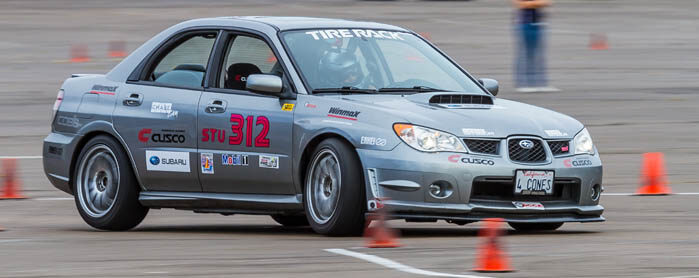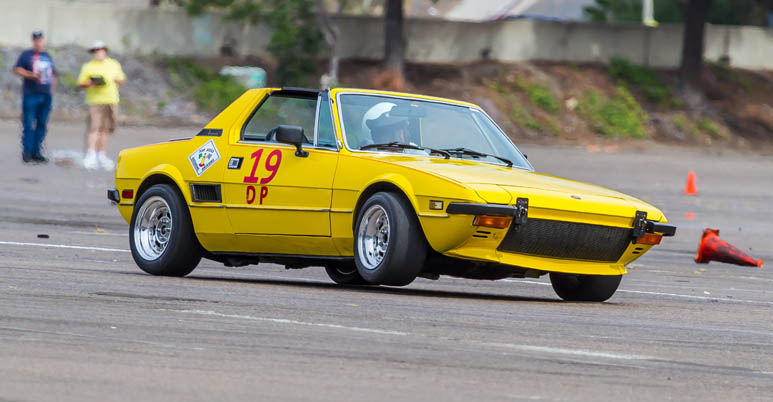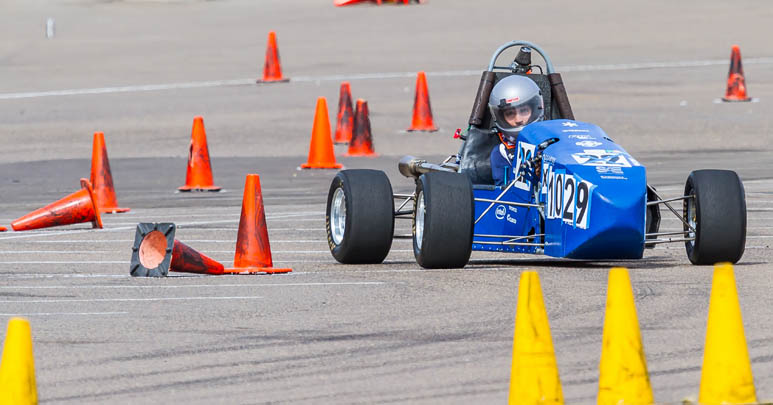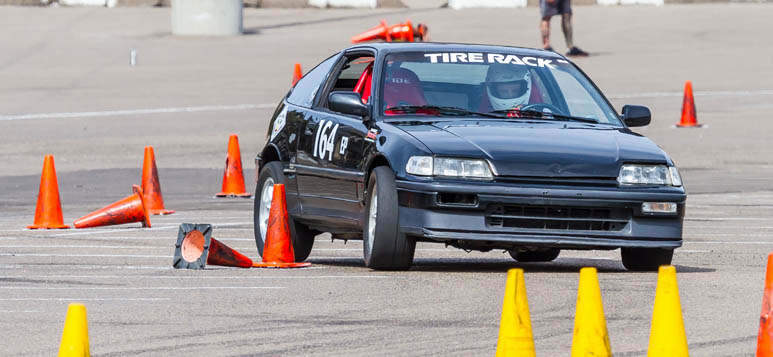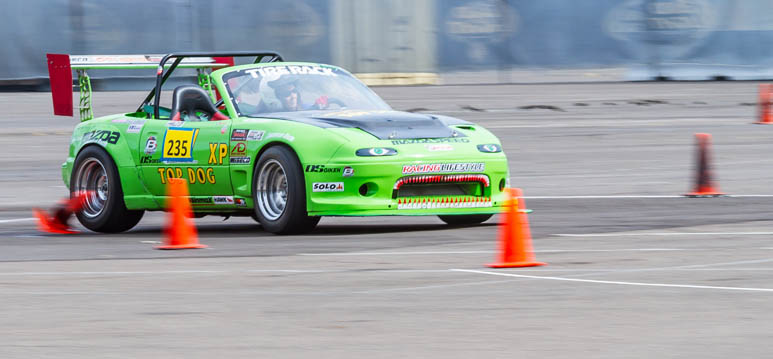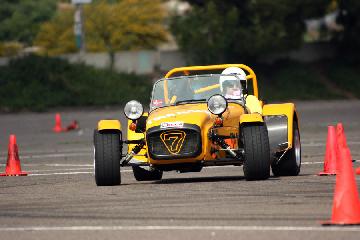Are you looking for one of our upcoming events? Please take a look at our events schedule here: https://sdrscca.motorsportreg.com
Do you have a minor that wishes to come to an event?
A digital SCCA Minor Waiver must be provided for each minor (person under the age of 18), this can only be completed before the event and signed by all legal guardians of the minor. We highly recommend applying a week before the event to ensure it processes in time. Follow this link for more info https://www.scca.com/downloads/59650-digital-annual-waiver-instructions/download. Please contact our membership team before the event for further information and confirmation the status of your SCCA minor application, we’re here to help – Membership Inquiry!
Day-of Newcomers Guide
New to our events and need a bit of help to navigate the pre-event hoopla such as when to arrive, where to park, and what to do? Look no further than our Newcomers Guide! Found right here: https://sdrscca.com/newtoautocross
What is Autocross?
An autocross (SOLO) is a skill driving event in which a car negotiates a prescribed course, using traffic cones to define a variety of turns. The sites are usually laid out on huge, open parking lots, or on sections of airport runways. The course is set up so that you are operating in lower gears, with a top speed of no more than 60 mph or so, depending on the car. The average time of a run on the course is approximately one minute, plus a penalty of two seconds for each rubber cone (pylon) hit. During each run you operate your car at it’s limit of acceleration, turning, and braking…and yours. You maintain complete control of your car while maneuvering through the course in the lowest possible time.
Sea of Cones : A Documentary About Autocross from Stephen Chiang on Vimeo.
While driving on the street, the time span of most emergencies is only a few seconds. Thus the experience of maintaining control becomes a valuable training session. You will develop a sense of timing, judgment, and ability to interpret your vehicle’s handling characteristics – at safe speeds and in a safe place. Your experiences at an autocross will enhance your driving ability on the street.
The Car
The events are open to any make of car, from an economy commuter car to racing only formula cars and racing Karts according to SCCA National and Regional classes for autocross competition.
Each car is required to undergo a technical inspection at every event. The ‘tech’ inspection consists of inspecting the front end, seat belt installation, throttle linkage, brake fluid level and brake response, steering assembly, tires, and helmet. Prior to bringing your car to tech you will be required to remove the hub caps (wheel covers or trim rings too) which can and will fly off during hard cornering. The tech inspectors will check that your battery is securely tied down.
The Driver
Autocross events are open to anyone who has a valid state drivers license. Drivers under 18 must have parental permission. The ‘old hands’ will assist you in learning the sport until you are an old hand. You bought your car to enjoy driving it, didn’t you? So – come to an event and enjoy!!!
Note, no intoxicants of ANY kind are allowed in the pits by drivers AND spectators.
Tips
Make sure your car is ready.
The first tip we can give you may seem obvious but it is often overlooked by newcomers: MAKE SURE YOUR CAR IS READY. Are you absolutely confident in the condition of your vehicle? Ask yourself and be honest. Will that noisy water pump stand up to high revs? Is your battery securely mounted? Have you checked your car’s suspension and wheel bearings for excessive play lately? How about the condition of the belts in the engine compartment? Brakes? Brake fluid? Need we say more?
The safety inspectors will check some of these items and some others that you might not expect. Remember – you are responsible for the condition of your vehicle. If you are absolutely confident in the condition and preparation of your car, you will be able to concentrate on the course and your driving techniques. Watch the people who win. You can see that most of them are fanatics about preparation.
Increase your tire pressures.
Substantially increasing tire pressures will improve the handling and safety of your car on a course. It will help prevent a tubeless tire from breaking the seal with the rim and losing air. Increasing pressure – up to a certain point – will improve cornering ability, steering response, and pavement feedback. We suggest starting at 40 pounds per square inch in all four tires. Ask people with similar type cars what tire pressures they are using. Identify yourself as a novice. You may also want to inquire about ‘chalking’ your tire to check rollover. An experienced driver can help you out. He (or she) may give you a reliable starting point at which to set your tire pressures, but you will eventually have to determine what works for you and your car. There are many factors which help determine what tire pressures to use: temperature, surface, weather, the course and the tires themselves.
Know the course.
One of the greatest challenges of autocross competition is the fact that all of the courses are different. All drivers are allowed to walk through the course, as often as they wish, until the competition begins. Study the course as you walk it. You may wish to jot down notes or draw your own map. Walk the course again and again until you have if memorized. One former National Champion (several times) has taught other drivers that you must be able to mentally follow the course with your eyes closed before you are ready to make your run. You will never drive the course fast if you don’t know where you are and where you should be going at all times.
When you are walking the course, try to look at the course from the perspective of the driver’s seat of the car. Remember that you will be driving off center in your car. Most novices can judge how close objects are to the driver’s side of the car but are usually a poor judge of distance to the passenger side of the car. Witness all those parking lot dents from the grocery store! Also watch experienced drivers put their tires within inches of each pylon.
As you are walking the course start thinking about what you feel will be the fastest way to get through each corner. Although the first several events that you run will probably be driven ‘gate to gate’, the goal should be to drive the course in smooth, flowing lines. Your line on one turn should leave you set up to plan the next turn. You should be looking several gates ahead. Try to plan times when you will be able to accelerate and when you will want to brake. Remember – time spent planning your run is time spent reducing your times in competition.
Driving techniques.
Drive smooth and controlled at all times. It isn’t easy to do, but it is the way to win. Those cars you see going through turns in ‘four wheel drifts’ are not being smooth and have lost some control. They may be able to regain control, but they have lost valuable time. The drivers that know how to win don’t always look like they are going fast – they know how to drive smoothly and maintain control of their cars. Other competitors listen to their times and wonder where they are going so fast – everywhere.
All your inputs to the car – steering, braking, and shifting should be smooth, controlled, and well timed. All sudden and abrupt inputs to the car will cause it to be unbalanced on the suspension, lose cornering speed, and cost you valuable time.
Smooth driving is a skill gained with experience and practice. Some people learn sooner than others. Start learning today.
Analyze each run.
We assume that you have attempted to put the preceding tips to use. After each run think of where and how you could improve your time. Do not dwell on your mistakes. THINK POSITIVE. Ask yourself questions: Where could I accelerate sooner? Where could I brake later or less? Which turns can I go faster in? Would a different line be better through some corners? Should I take the slalom the other way? Did I stay on course? Did I hit any pylons? How can I avoid them next time? Adopt an experienced driver. There are many drivers who will be willing to watch your run and critique it for you. We welcome new people to our sport and want them to come back – of course we will help you.
Help work the course.
Although this may sound like a bore to you, our suggestion is very important. All of the most experienced drivers spend a lot of time shagging pylons. Why? There is always something to learn, always something that we are not sure of. The best place to observe is out on the course. Some other driver may try a line that you were planning to use through a particular turn – you can see if it does or doesn’t work. Wouldn’t it be nice to find out before you tried it. You may see things that you had not thought of and want to try them. Talk with and listen to other workers, they may give you very useful information.
By working, you will help the event run faster and smoother. If everyone helps, all drivers may get an extra run or two. Wouldn’t this be great if you were a second behind the leader in your class and had an idea where you could gain some time if you had JUST ONE MORE RUN!? By having all of the entrants work we are able to keep entry fees reasonable.
DO NOT GIVE UP IF YOU ARE NOT COMPETITIVE.
NONE OF US WERE AT FIRST AND SOME OF US STILL ARE NOT, BUT WE STILL ENJOY THE FUN AND COMPETITION! REMEMBER THAT RACING IS NOT AN EASY SPORT. THERE IS ALWAYS SOMETHING NEW TO BE LEARNED. WHETHER YOU ARE WINNING OR NOT, YOU WILL BECOME A BETTER DRIVER AND YOU MAY LEARN A THING OR TWO ABOUT YOURSELF.
In the Beginning
Show up early enough. How early? Well that depends on when you run. There are some things you need to do and these will take time. It is best to not be too rushed. I recommend showing up before 8:00 am. We recommend showing up early on your first event, perhaps by 7:30am so you have plenty of time.
We will assume your car is ready to go before you take off for the event. You brought a helmet or are prepared to use a loaner. Maybe some water, snacks, and lunch, but if you need to leave there are usually many establishments close by.
Bring sunscreen and a hat if you wear one. You may be out in the sun. Some people bring EZ-up style awnings and lawnchairs. If you do bring an awning, make sure you have a way to hold it down (extra tires?) in case of a breeze.
When you first arrive and pulling into the paddock (Where people park before the event starts) you will see various cars and tow vehicles. Some areas will have been marked out. It’s not good form to park behind someone’s trailer or hauler. Find an open spot and park. Remember that the speed limit in the pits is very low! Some areas will have been marked out with cones because it’s someone’s way of claiming the location, and along the same lines, it’s not good form to park behind someone’s trailer or hauler.
WAIVERS
The first step will be to sign an insurance waiver (if you haven’t done this online during registration) at the gate. All people entering the diving area (referred to as the “Hot area”) will need to show proof of waiver or show a “driver wristband.
A digital SCCA Minor Waiver must be provided for each minor (person under the age of 18), this can only be completed before the event and signed by all legal guardians of the minor. We highly recommend applying a week before the event to ensure it processes in time. Follow this link for more info https://www.scca.com/downloads/59650-digital-annual-waiver-instructions/download. Please contact our membership team before the event for further information and confirmation the status of your SCCA minor application, we’re here to help – Membership Inquiry
EVENT SIGN-UP
Registration for events is handled exclusively on-line through Motorsportsreg.com. Registration opens 3-4 weeks prior to the day of an event, it will disclose all of the fees and venue. Registration handles both single day and two day events, you are not required to sign up for both, though its certainly encouraged. Walk-up attendees are still allowed though you will still need to go on-line and register.
DAY OF REGISTRATION (check-in)
When you arrive look for the large tent with tables, this is the registration tent (times registration is open is specified per-event, please check the on-line event sign-up to verify before arriving) . You will be asked to fill out the “White registration card”, this helps us verify information about your vehicle and is used to complete the vehicle technical inspection. Please PRINT CLEARLY and fill the form out completely. We must be able to read your entry form. If you don’t recall your work/run group, the registration staff can help you. Don’t know what class your in? Solo II Car Classifications can be found online or ask by emailing us at info@sdrscca.com.
There is a worker sign up form during registration/check-in process, this identifies your worker duty during that portion of your day. You are assigned a work group based on your run group you are in (it is on your white registration card). When signing up for a work group, some tasks can be more physically involved, we have positions that are catered to handle a variety of physical restrictions just let the registration staff know and they will help you out. Certain tasks like those working inside the trailer require training and experience, we are excited to train anyone to do this work but its at the discretion of registration, timing and scoring and the event chairperson.,
After registration you will need to prepare your car for “TECH” (Vehicle technical inspection)
HELMETS
Helmets must be worn for all track and autocross events. Helmets certified as meeting the most current or the two most recent applicable Snell, FIA, or SFI standards are acceptable.
If you do not have a helmet we have loaners available at the timing trailer. Please have your drivers/passengers wristband and bring your valid drivers license to leave in the trailer while you borrow a helmet. Return the helmet as soon as you finish your runs – others may need to use it.
TECH INSPECTION – WHAT YOU MUST DO
Before driving to TECH:
- Remove everything moveable from the car and trunk; coats, coolers, tapes, tools, floormats, things hanging on rearview mirror, loose change, pretty much anything that is not bolted down.
- Take convertible tops down or remove ‘T’ tops. (These may remain up in inclement weather).
- Remove wheel trim rings, decorative center caps, hub caps, wheel covers, and any other wheel trim. (anything else covering the physical lug nuts.)
- Attach your designated car numbers and class lettering(s) (if you don’t have any, you can get paper numbers, letters and blue tape from the “TECH BOX” for $1, just remember do not drive to TECH w/o these already on your vehicle or they will ask you to come back).
- Bring your Helmets for inspection (if you’re using a loaner helmet please advise TECH staff of such).
TECH INSPECTION – WHAT WE WILL CHECK
- Battery brackets must be secure.
- All lug nuts visible and secure
- Tires should have no cords showing
- Wheel bearings, shock absorbers, steering and suspension shall be in good operating condition.
- Fuel, oil, and brake fluid lines and fittings should be checked for leaks.
- Proper helmet (if you’re using a loaner helmet please advise TECH staff of such)
- Number and class letters on vehicle (These should be on the vehicle already!)
After tech is complete and you have passed, they will place a sticker authorizing you to run. If there is a co-driver they too will get a sticker. Take your car back to your spot.
WALK THE COURSE
The course changes at every event.
There are no ‘orientation drive through’ runs. Determine which direction you will go on optional slaloms (chicanes). Understand that the slalom requires you to go in and out each alternate cone. Know where the gates are, if any.
There is usually a ‘novice walk through’ of the course lead by a top notch experienced driver. This will occur either just before or just after the drivers meeting. Listen for the walk through to be announced and take advantage of it.
It can take anywhere from 10-25 minutes to walk the course, keep in mind the course closes for walking 30min before the first car goes out (usually 9am).
WORKING THE COURSE
Rule 1: Safety. Always watch for the cars. Keep your head up. What you are not allowed to do: No cell phones or cameras. No sitting down whiles cars are on the course. Always watch the cars. Do not assume that the drivers will not slide off course. Do not stand next to the course. Be aware of the fire extinguishers.
Always carry the red flag in your hand. Do not roll it up tightly as then it is a red stick. Do not let it flap around as many drivers will see it and be distracted.
Every driver is also required to work at the event. Below are some instructions and helpful hints for this work assignment.
Watch for displaced or knocked down pylons. Report downed cones to timing on the radio, if you have one. Report your station number, the car number and the offence – ie. how many cones, DNF, rerun, etc. If you don’t have a radio, you should already know who you are reporting to and how to signal him or her to indicate how many cones. If people are reporting to you, you need to know who they are and make sure you glance at them.
What is a DNF? It’s not when they just hit a cone. The letters DNF means Did Not Finish and what it means is that the driver did not finish the prescribed course. He or she cut off part of it.
To DNF, a driver needed to have fully exited the course, and then finsihed or re-entered at a point farther along. If the driver leaves the course, does a loop and comes back in at a point where he left or before, that is not a DNF. A common method of DNF is to go on the wrong side of a cone in a slalom, to miss a gate, or to drive straight along a slalom. As a worker, you need to carefully watch for this, it is surprisingly easy to miss and can be very unfair to the competition.
What is a cone penalty? If the cone is pushed over, laying on it’s side, or if it’s totally out of the box. If it is still standing and any part is touching the box, it is not a penalty! Hitting and/or misplacing a directional cone does not count against someones time.
Hints:
1. Watch for wiggling cones just behind the car which has passed. This is a telltale sign of a cone which has been nudged out of its box.
2. Check your cones when you first get on course and periodically during your assignment. Often cones get moved and they should be put back in the box. Even a nudged cone should be reset. It’s not fair to the competition otherwise.
3. Watch for off course runs. Any time that a car fails to pass through the gates which define the prescribed course it is called “DNF”. This includes vehicles which negotiate a non-optional slalom the wrong way. The path followed by a vehicle between gates is not a factor in calling off courses (i.e. if a car spins off course but comes back to the correct gate and continues its run it is not off course. Report off courses to timing on the radio or with the white flag.
Wave the red flag at the car(s) on the course if you see an unsafe condition or if you are told to do so by timing or a safety steward.
Red flag conditions include:
A stalled car on the course
A spectator, animal or other “uninvited guest” on the course.
Fluids leaking from the car on the course.
A call over the radio or PA to ‘stop the car’
When displaying the red flag, wave it vigorously but do not stand in front of the car you are trying to flag.
Remember that your actions as a course worker directly affect the scores of other competitors. It is very important to assign displaced or downed cones to the proper car (and driver). You can learn a lot while working the course and it can be fun, but you must always pay attention to your work. You should also remember that you are in the middle of an autocross course surrounded by speeding cars. You have to be ‘heads up’ at all times.
Note, if there is a downed cone or two, it’s not recommended that you red flag the driver. It’s their choice to stop for a downed cone and demand a rerun. Many drivers will not even see a downed cone. It’s best to get the cones reset before the next car, but safety is the number one thing. If you can’t, just back away from the course and watch the next car. A smart course worker will not distract the driver by running away from the course…or tip his hand by holding a cone and displaying it.
DRIVER SAFETY
Wear your helmet with the chin strap fastened during each run.
Be alert. Use your safety belts.
If you ‘get lost’ or go off course don’t give up and drive to the pits. Figure out where you should be and complete your run. This will help you remember the course on your next run. This is also an important safety measure – there may be another car on the course behind you. You can ask for help from the course workers. If you are new to this sport, ask for an instructor to help guide you through.
Learning how to see and negotiate cones is a skill that we all learned. It is not easy. Almost all of us veterans have gotten lost on course. Don’t just drive if you are no longer sure where the course goes. Or as I mentioned to someone I was instructing.. “If you don’t see any more cones…and you only see people running, it’s time to let off the throttle.”
The red flag means STOP NOW (in a safe and controlled manner).
If you should spin or lose control of you car, bring the car to a complete stop, gather your wits, and proceed safely off the course and away from any cars and cones. Look for the safest way back to the grid area. Note, San Diego does not have it’s red flagged drivers proceed on course as some regions do.
Never try to save a run when you’re in over your head. It wastes tires and can be dangerous. If you feel the car is spinning, push in the clutch if you have one (saves the engine from being rotated backwards) and the brakes. Do not just mash the throttle and try to be heroic. Remember, both feet in (brakes and clutch). Spins can teach you a lot, so there is some positive there.
In many cases when a run is messed up, the safest and easiest thing to do is not try to save a bad run, but just safely go off course and re-enter. The run is probably not your fastest anyway.
Always know where the timing lights are! Immediately slow down after the lights. In San Diego, you are required to come to a stop and pick up a timing slip from a worker after the lights. Failure to come to a stop may be grounds for disqualification.
Hint: A shot of adrenalyne and some spiriting driving can affect your perception. Think in terms of a switch. As soon as you pass the timing finish lights, switch over to SLOW mode. Now you drive up, stop, and get your timing slip. And now slowly putt over to your grid line or your pit area. It’s very easy to speed and not realize you are doing so. 10mph will feel very slow after a fast autocross.
Speed Limit in the pits is walking speed!
We offer a Novice Class. This means you will run against other newer drivers. Many with different cars. The focus of this class is less on competition and more on improvement. We may overlook very minor technical modifications. Key word being May.
As a novice, you are allowed to have an instructor ride with you. This is a valuable learning experience, Try to use different instructors as everyone brings different perspectives and experiences. We also allow the instructors to drive your car, but you should never feel pressured to let that happen unless you want them to.
An instructor CAN make it easier to show you something by driving your car, and instructors are picked because they have demonstrated competance on the course. If your instructor drives, that run is not counted against your runs.
If you are getting lost on course, ask for an instructor. They can help.
If you still have questions, please email us at info@sdrscca.com.
Originally written by: Randy Chase
Modified by: Various Members of SOLO Board
